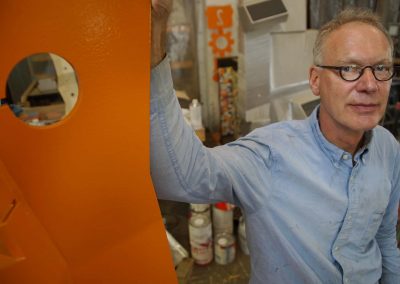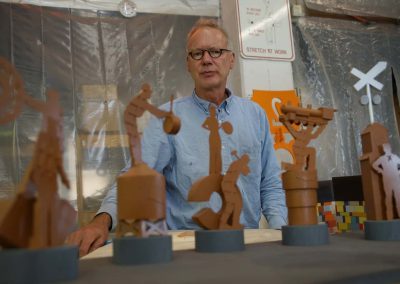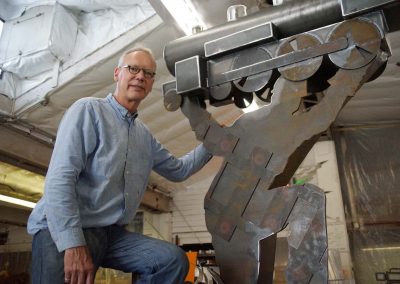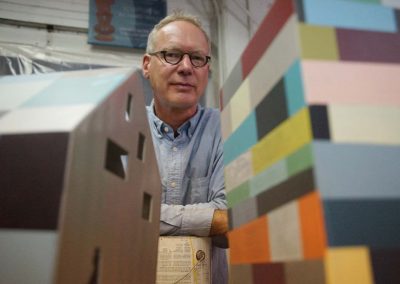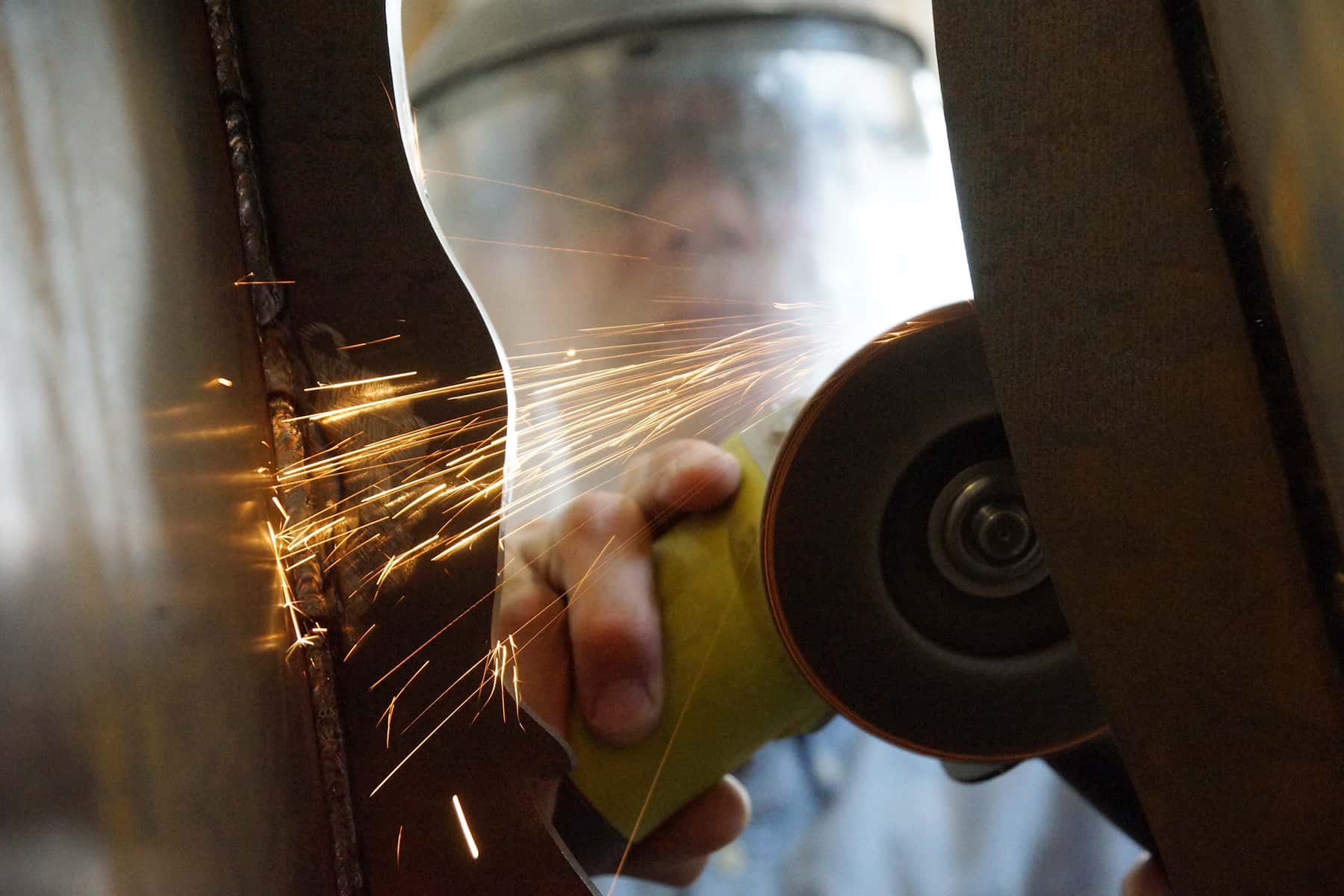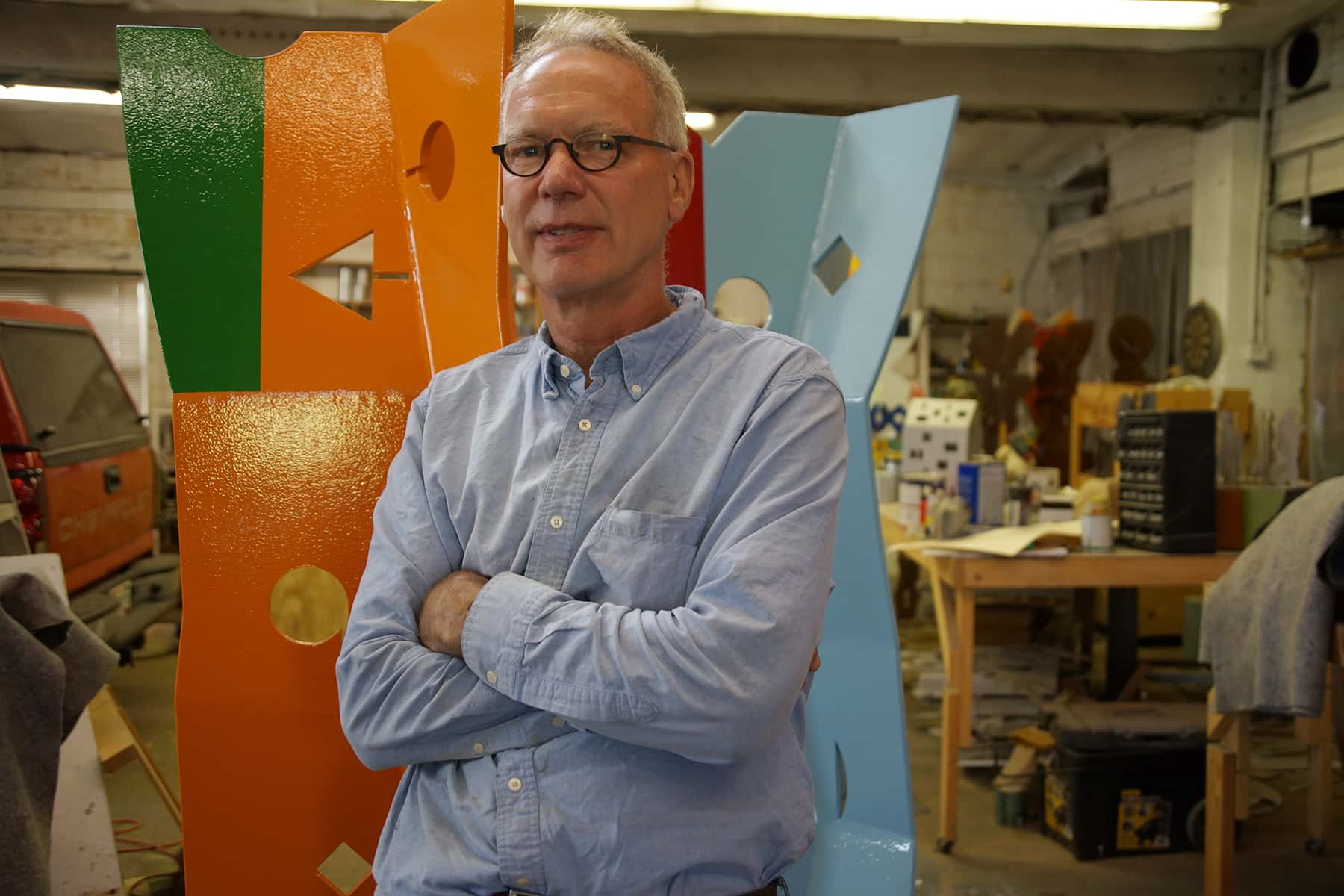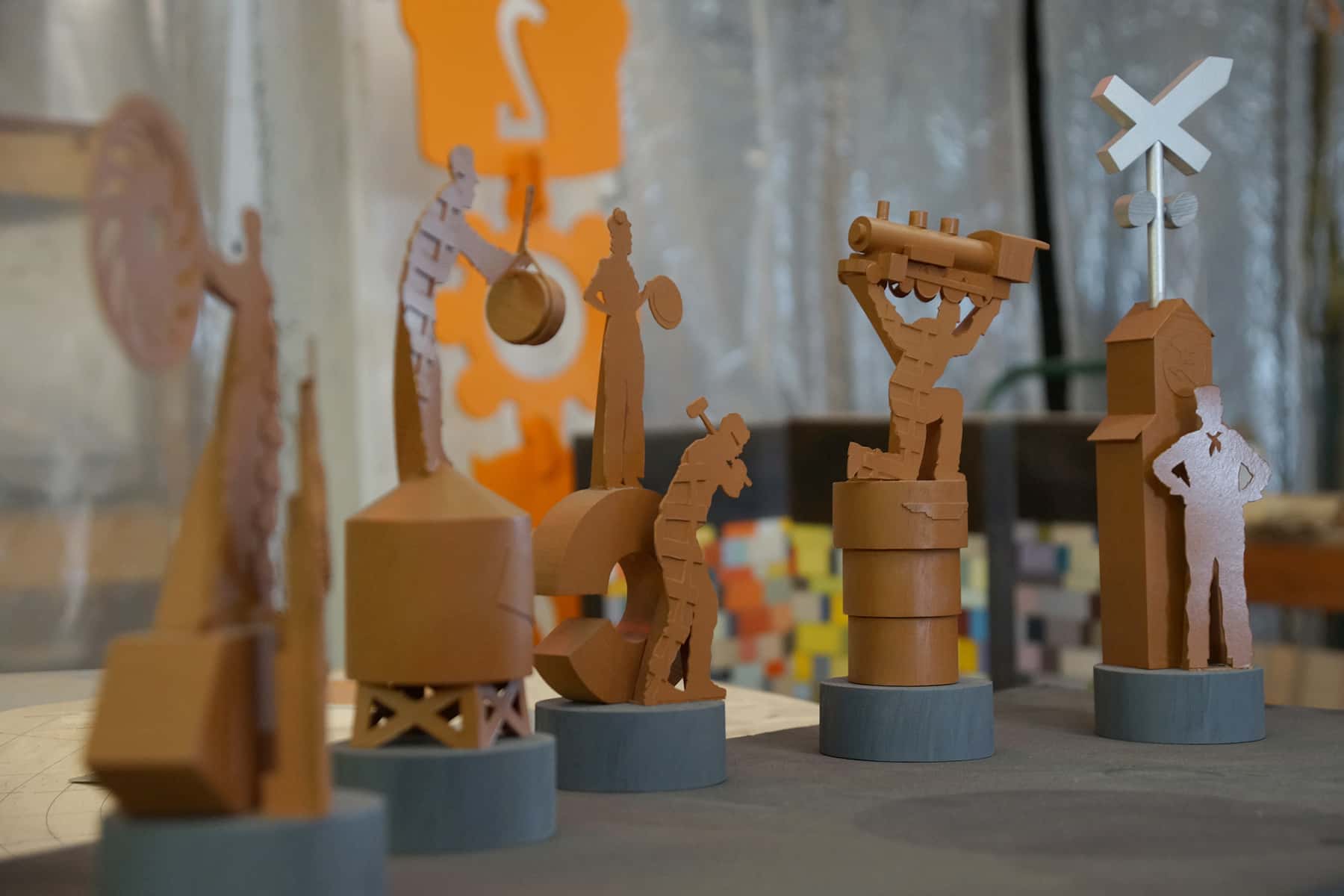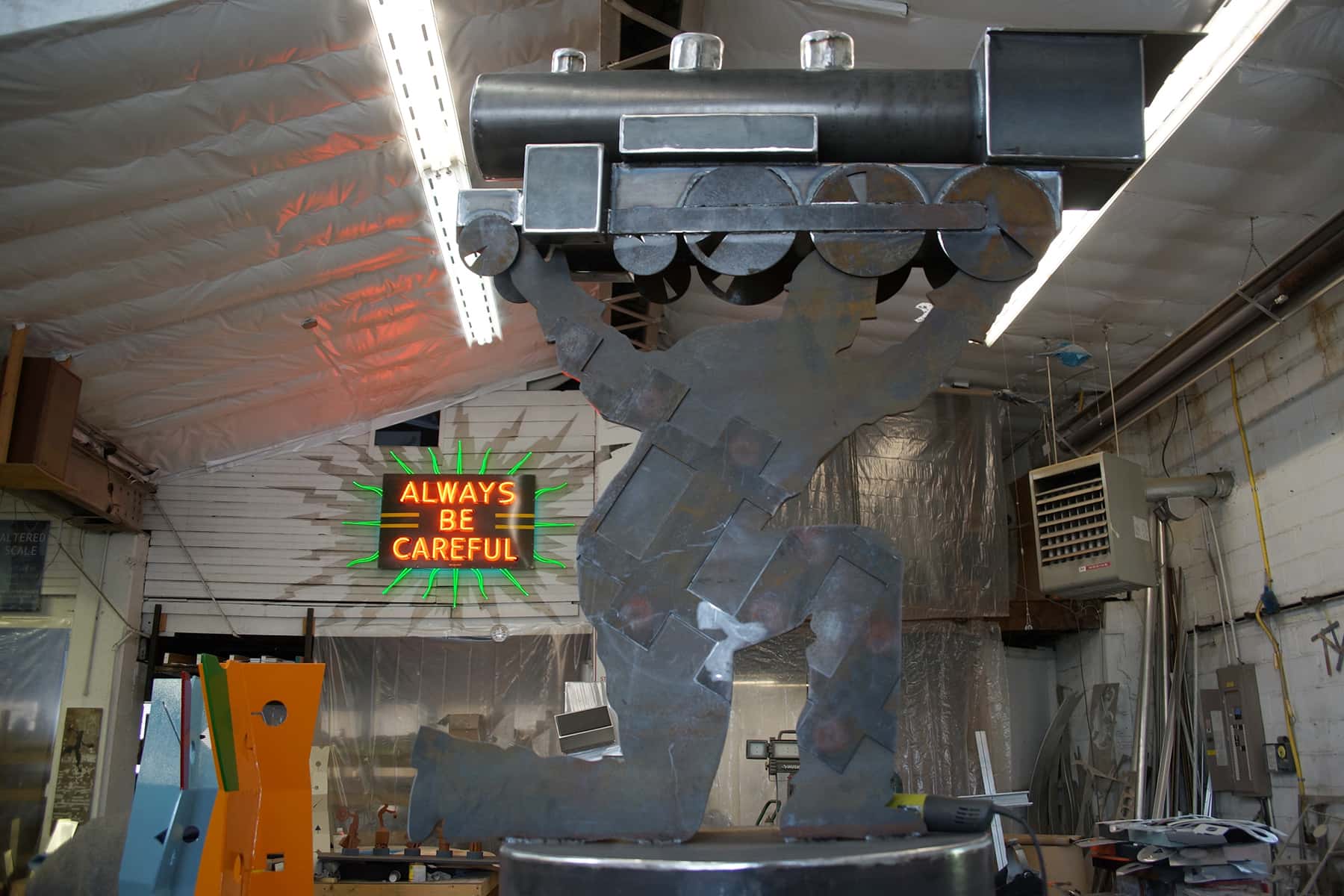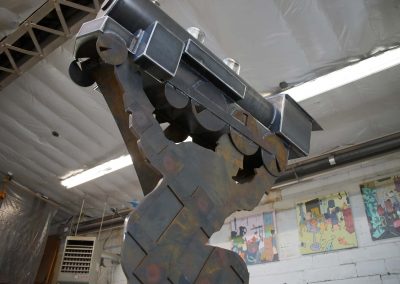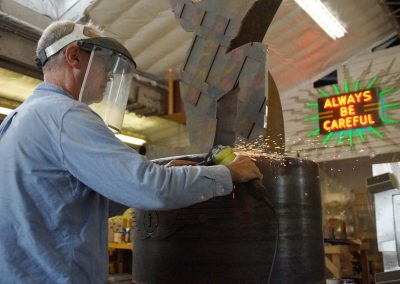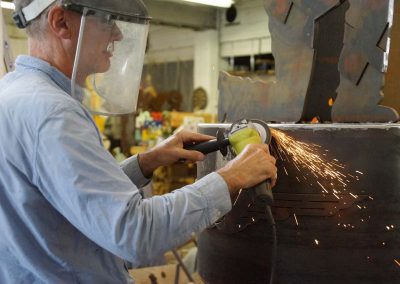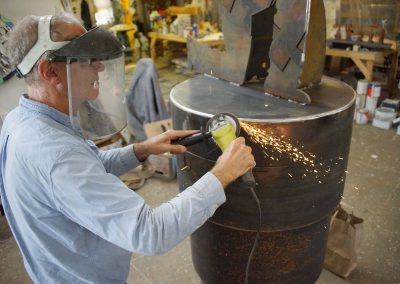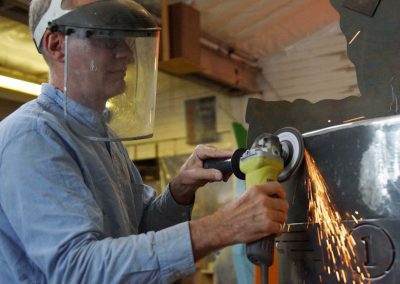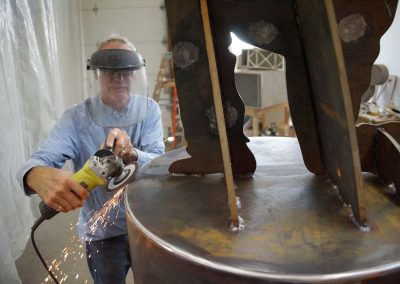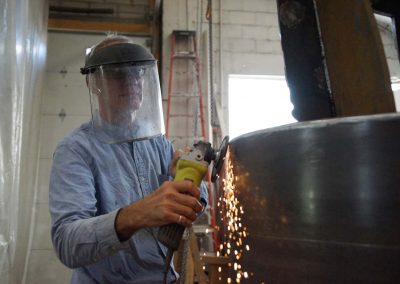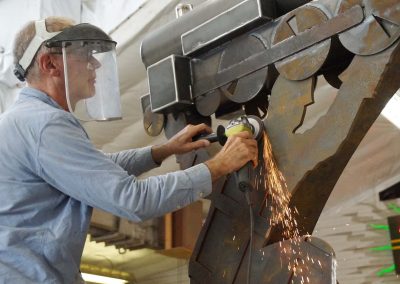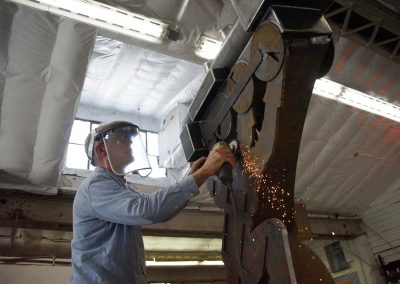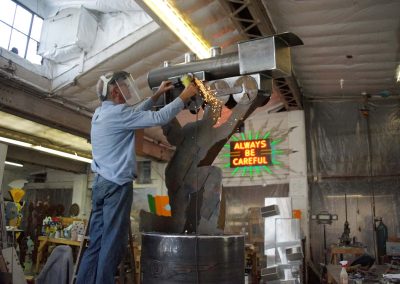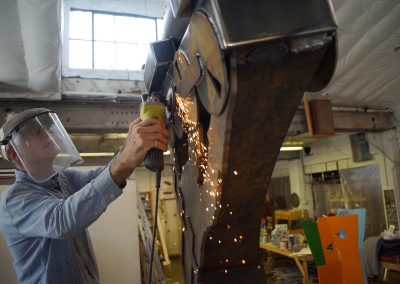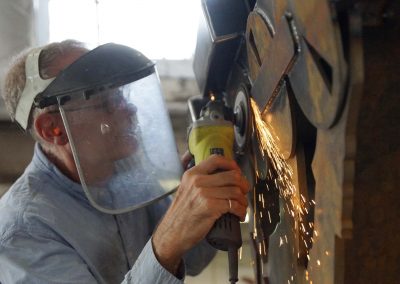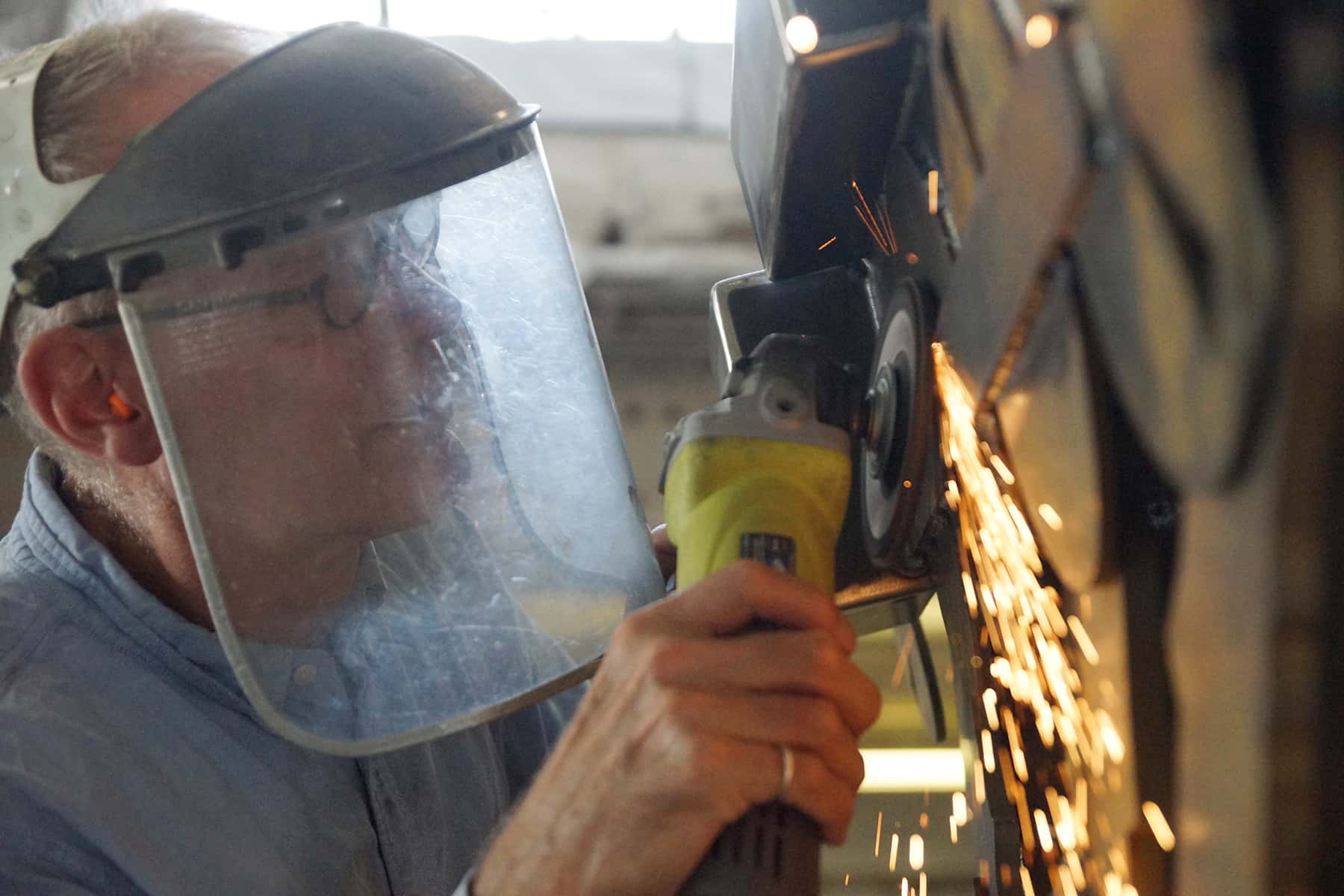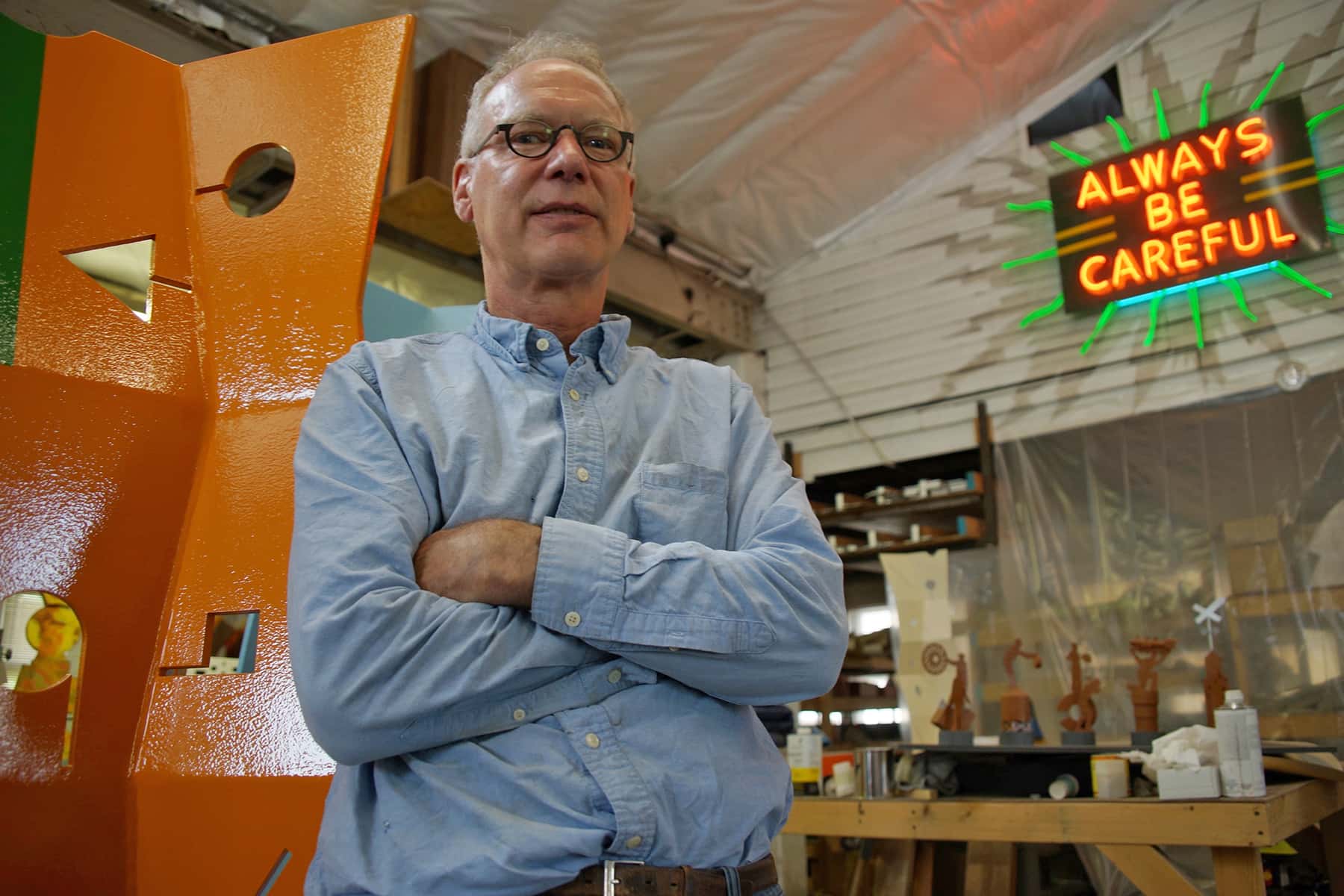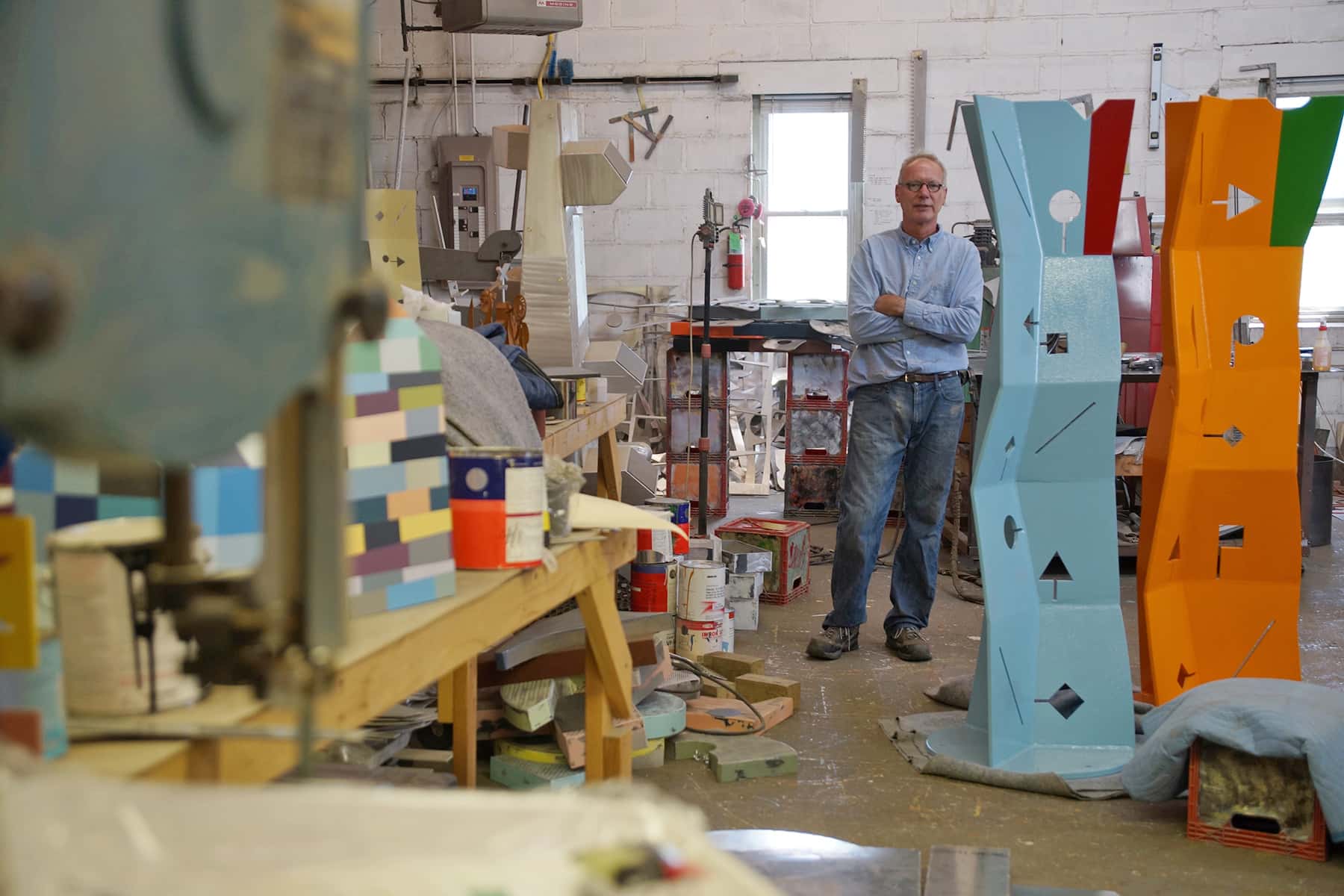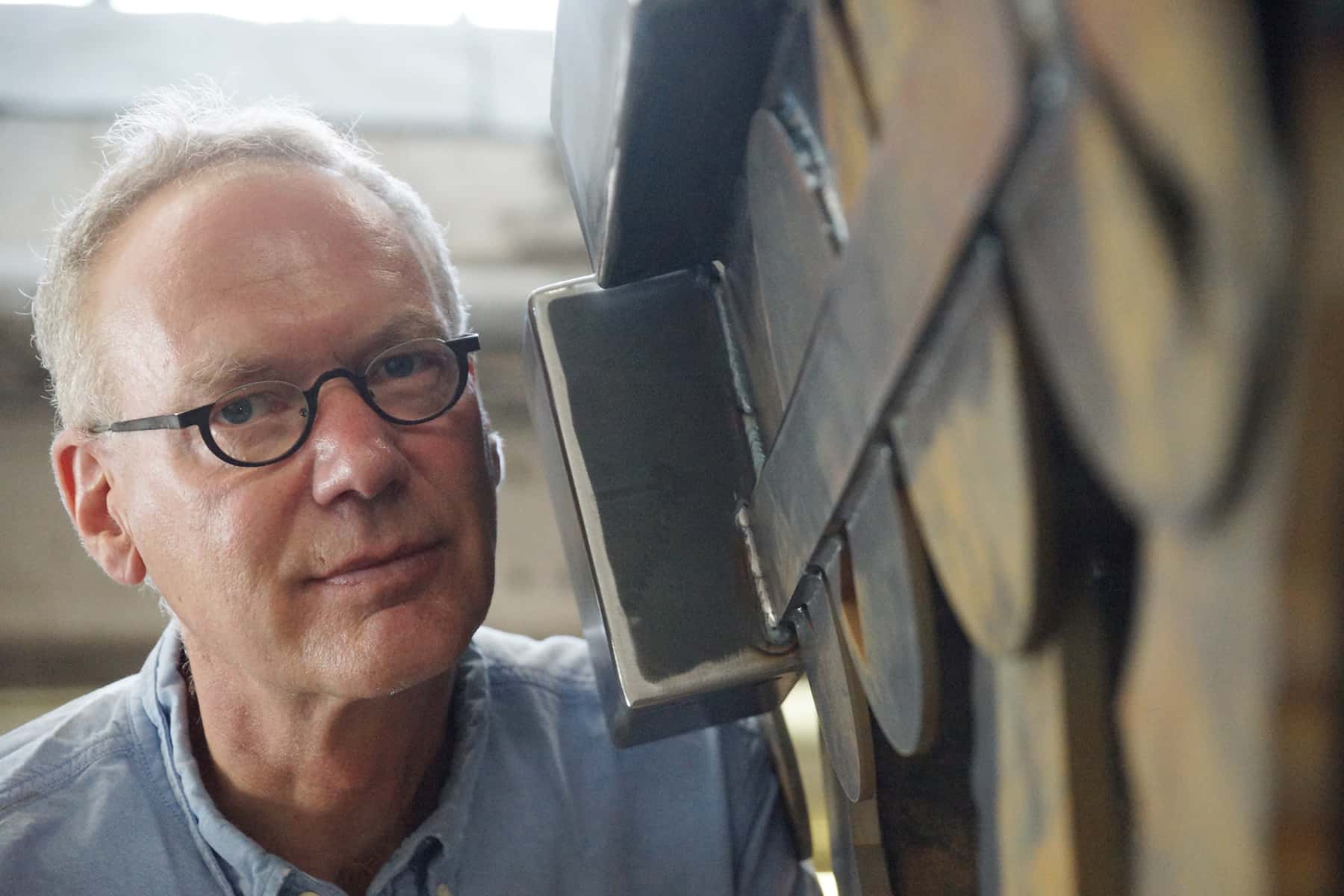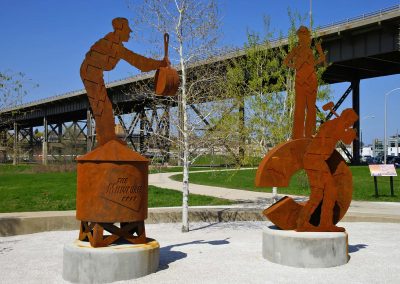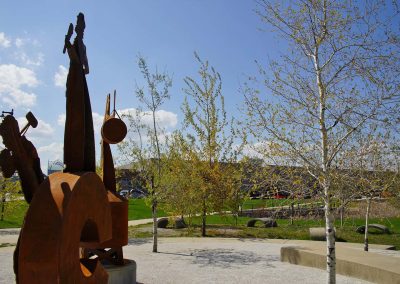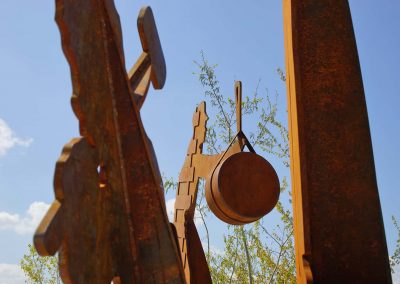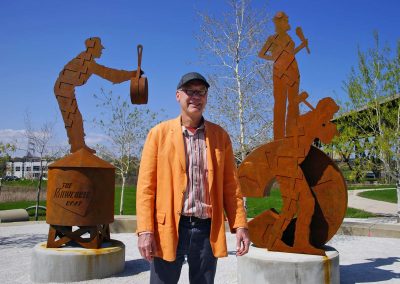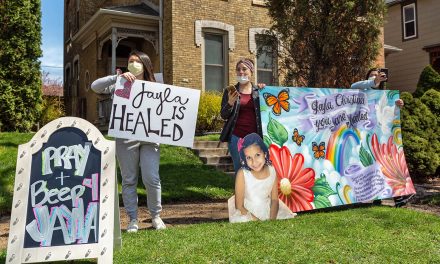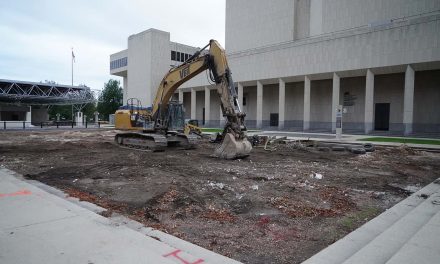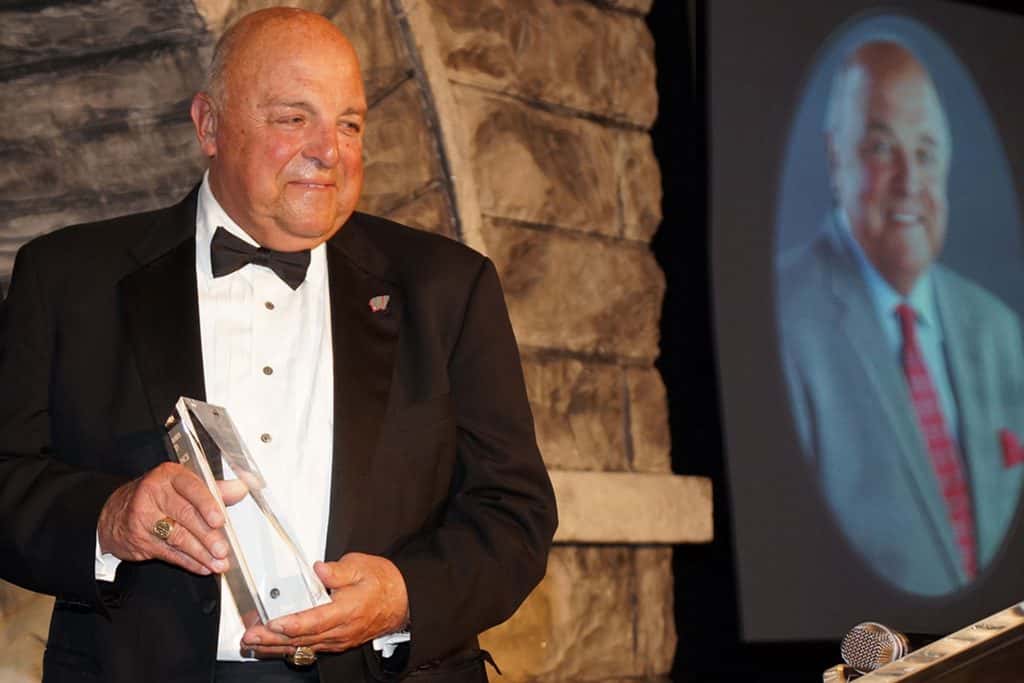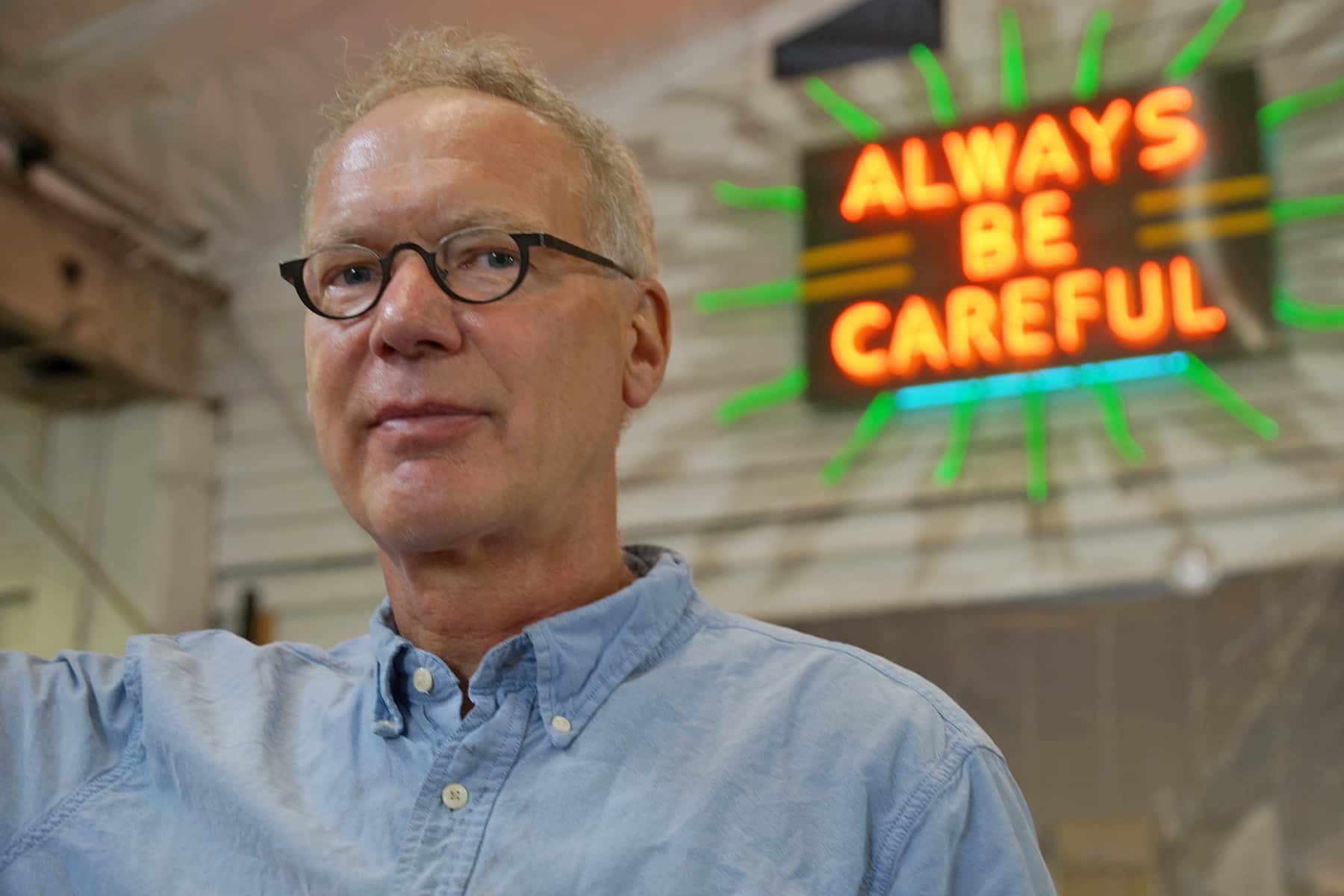
Using metal as a three-dimensional canvas, artist Richard Taylor recently sculpted an iconic series to immortalize Milwaukee’s People of the Road.
Taylor has crafted monumental public sculptures, related to his experiences with people and architecture, into visual souvenirs that have earned him recognition across the country. The influences of music and poetry can also be seen woven into the fabric of his compositions, with the large-scale shapes designed to compliment the natural environment surrounding their installation. The Milwaukee Independent talked with Taylor about his artistic passion and most recent historical project.
Q&A with Richard Taylor
Milwaukee Independent: What is the fondest memory from your youth, and who impacted your life the most while growing up? Do you still see their influence today?
Richard Taylor: Of many fond youthful memories, building model airplanes tops the list. I would be lost for hours constructing plastic models and painting them, then balsa wood planes which actually flew. The problem was that the balsa planes would eventually crash, and maybe I learned to appreciate the ephemeral nature of things earlier in life due to the crashes. A huge influence on my life was my Marquette High School band director, Joseph LaSpisa. I continue to play the saxophone and to love jazz and classical music, thanks to him.
Milwaukee Independent: Why did you choose to live in Riverwest, and how has the local art community nurtured or obstructed your career?
Richard Taylor: My studio is in Riverwest, a rich community of artists and makers. I chose my studio building for its spaciousness and because it has a hoist allowing me to lift one ton, a very practical consideration for sculpture making. I actually live on the East Side, a fifteen minute bike ride from my studio.
Milwaukee Independent: What inspired you to become an artist and, how did you choose both 2D painting and 3D sculpting as your creative expressions?
Richard Taylor: I was always the kid drawing in school, so art has been a life-long love. My training was in painting, drawing and printmaking. The 3D came later as a result of being the artist-in-residence for Quad/Graphics, where the metal workers in the fab shop taught me to weld and work with metal.
Milwaukee Independent: Has any of your artwork in Milwaukee been considered controversial, and what has gotten the most positive attention?
Richard Taylor: I would not characterize any of my works in Milwaukee as controversial. The most media attention I have had was many years ago when I had concurrent shows of paintings of people shopping in Pick and Save. The shows were in a Pick and Save on Capitol Drive and a gallery on the east side. There are a number of sculptures of mine in the Milwaukee area, and I receive the most comments on the two at the entrance to the Central Library and to one on the sidewalk of the Milwaukee Public Market.
Milwaukee Independent: Why are music and poetry so important to your creative process, and why do you prefer to produce pieces in a series?
Richard Taylor: Music and poetry are deeply woven in the fabric of my life, so it is only natural that they find themselves expressed within my artwork, sometimes consciously, sometimes unconsciously. I find a richness in variations on a theme, so working in series allows for exploration much more for me than creating a group of unrelated pieces.
Milwaukee Independent: How do you select the types of materials you worth with, and what has been the most complicated art production for you?
Richard Taylor: Choosing materials is a balance of aesthetics and practicality. If I am making an outdoor painted sculpture, I will use aluminum as the metal, as it will never rust, as steel eventually will. Conversely, the surface of rusted steel can be quite beautiful, so choosing corten steel for an outdoor material is practical and beautiful in another sense. The most complicated production for me was a collaboration with California artist Eric Orr on a series of three sculptures for Johnson Wax. I created the sculptures and Eric created a water system within them for a series of water streams falling into a basin.
Milwaukee Independent: How did you become involved with the “People of the Road” project, and do you have a personal connection to the Menomonee Valley’s former railroad industry?
Richard Taylor: I entered a competition for the Milwaukee Road Monument, as it is called, and won the commission. My personal connection is that my father worked for a summer during his student days at Marquette University on the Milwaukee Road in Menomonee Valley.
Milwaukee Independent: What was your vision for “People of the Road” sculptures, and how did you hope it would be viewed by the public?
Richard Taylor: My idea was to celebrate the people who worked on the railroad. Over 5,000 were employed in the valley building locomotives, rail cars, and thousands more across the country from Seattle to Indiana to southern Illinois. I did a lot of research in the archives of the railroad and used photographs of Milwaukee Road workers to model the silhouettes of the workers seen in my sculptures. I hope it will be viewed by the public as a sincere homage to those who worked on the railroad, and used as a tool to learn more about its history.
Milwaukee Independent: When will the next “People of the Road” sculpture be produced and installed, and how can the public help the project?
Richard Taylor: The third of five sculptures was recently installed in the valley on Canal St. just west of the 35th St. viaduct. The Friends of the hank Aaron State Trail continue to fund-raise for the remaining two pieces, and, if moved to do so, people can help by going to the FOHAST website and making a contribution to the monument. We hope to install the last two pieces in spring of next year.
Milwaukee Independent: What is your hope for the future of Milwaukee’s art community and what iconic project would you like to see come to the city?
Richard Taylor: My hope for Milwaukee’s art community is for it to keep growing and to keep reaching out to other sources of art to enrich our local scene. Our Milwaukee Art Museum does this with every show and artist it exhibits from elsewhere; Sculpture Milwaukee does this by bringing is pieces from out of town each summer. The recent additions of mural activity to the city in Wauwatosa and Black Cat Alley are positive, lasting projects. Most important to me would be to see the return of arts and music education into our public schools. This is where the arts grow into kids’ lives, when they are young and the seeds of aesthetics are planted for a lifetime. The elimination of these programs under the educational budget cuts of an unenlightened recent governor have spiritually impoverished the lives of tens of thousands of students. We need an aesthetic awareness in our society for so many reasons, and it all starts in school. Kids should have the opportunities we had at their age; art and music education give them this necessary ingredient of a life well-lived.

